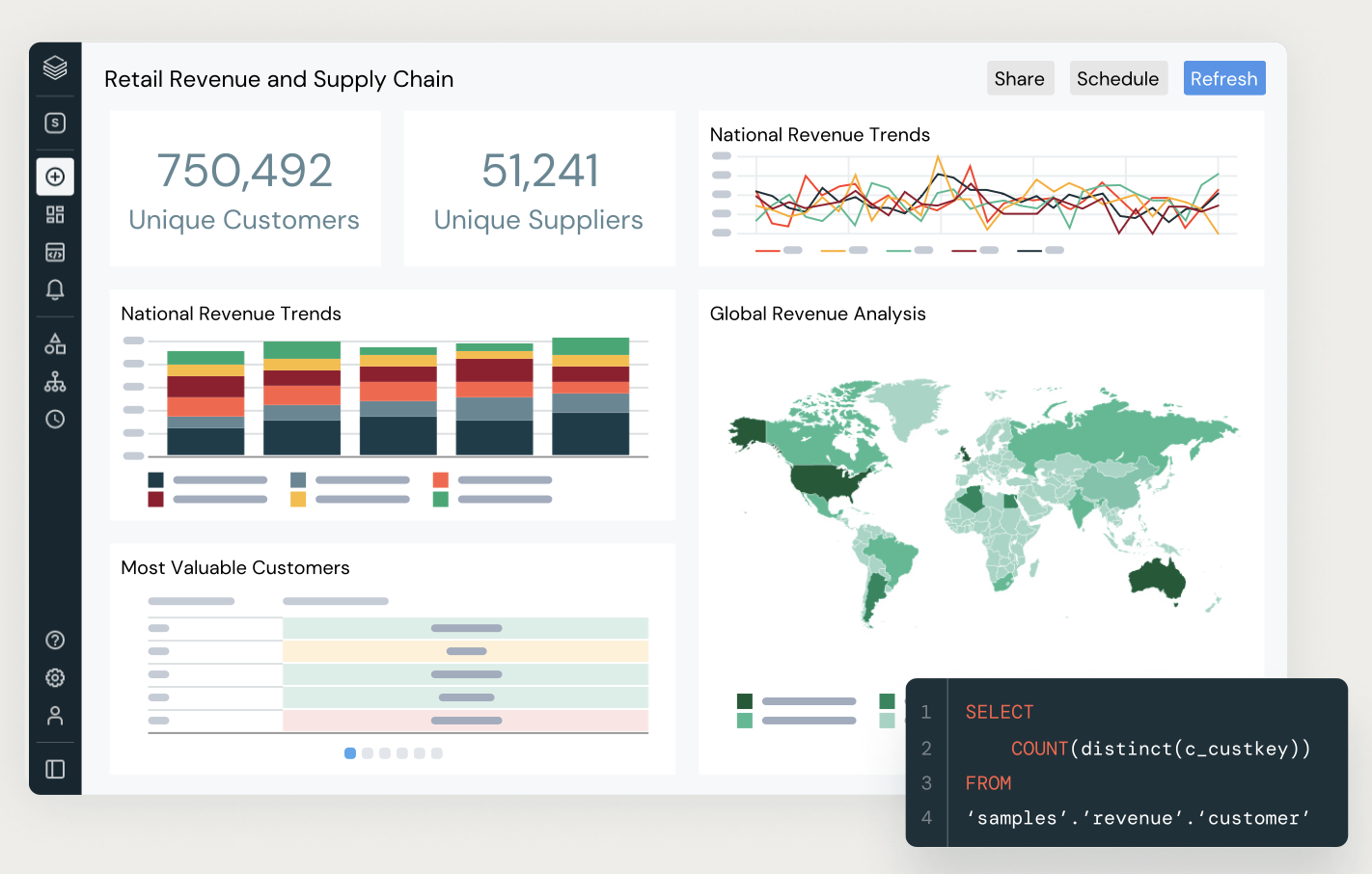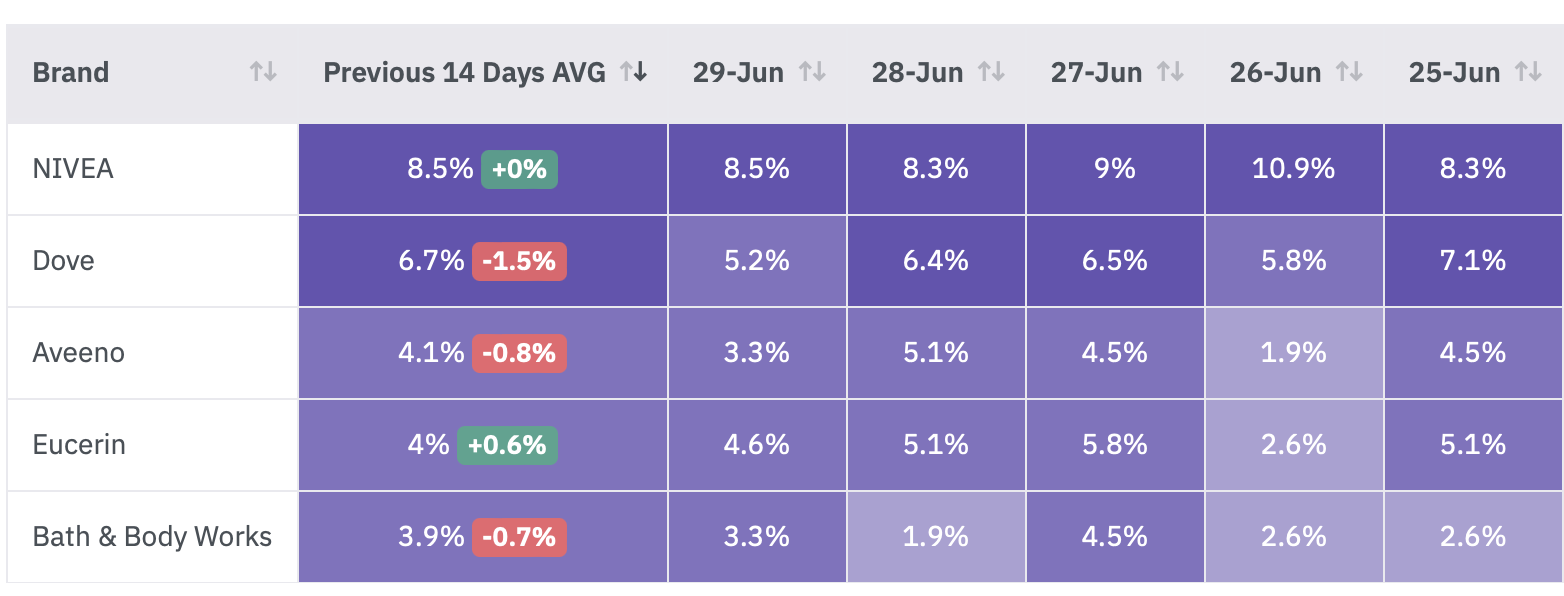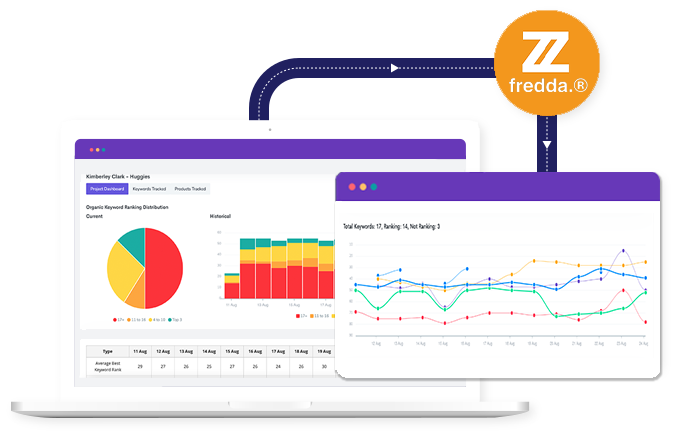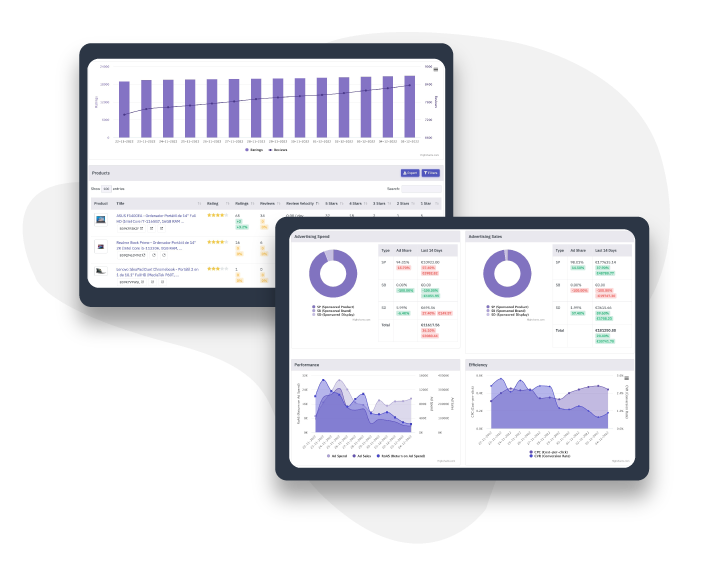Difficult negotiations with suppliers, growing costs and complex price algorithms make many brands question the 1P Amazon Vendor model. Is the solution to Seller Central (3p)? The answer is: not always, but it is worth having that plan B that allows us to pivot between Amazon Retail and Amazon Marketplace.
The participation of brands that sell through Seller Central has increased in recent years. 60% of all units sold at Amazon came from third sellers . The main reason why this is happening is to avoid the high costs associated with the 1P model. However, the brands often overlook the hidden costs that lead to a 3P account.
Should you change or not? Should you combine both? Read this article to know better where the answer would go.

Index
Why go from 1p to 3p on Amazon?
The reasons why vendors think of becoming third sellers are:
- Improve your margins.
- Control the prices of your products.
- Recover control over the management of your inventory.
Many brands have been frustrated with the 1P vendor model because it has become complex and cost to manage . Vendor Managers send suppliers to self -service tools or the case system in central vendor, leaving brands without much human interaction to manage their accounts on Amazon.
Without neglecting that the vendors are subject to annual negotiations and brands usually see these negotiations as long and difficult.
With more transparent rates for vendors than for suppliers, changing central vendor to Seller Central can be a real cost savings opportunity that brands should consider when selling on Amazon.
When to go from Vendor to Seller Central?
There are several scenarios that justify this change. Let's analyze what are:
Amazon has set aside
If you are a brand that does not have access to a dedicated manager vendor and depend on the management of cases in Central Vendor to solve problems , you are probably managed by the Amazon Success Program (VSP) vendor of Amazon.
His work is to manage brands with low -scale income, maintaining direct contact to a minimum. It is not uncommon for VSP managers to handle several hundred suppliers accounts simultaneously.
As you will know, this makes it difficult for brands to obtain dedicated support to manage inventory levels, operations or questions about your catalog. Instead, Amazon invests a lot in the support for their 3P vendors, who can speak regularly with an account manager and receive well -documented instructions on how to administer their seller account.
So, if you feel that Amazon does not show much interest in your 1P business, opening a 3P account will probably give you access to a better support system that your equipment can use to develop your market sales.

The cost of serving Amazon has become unsustainable
Annual negotiations with suppliers and requests for compensation for equalization, mean that the relationship with your manager vendor is probably transactional. As long as you invest more every year, the 1P business model will probably return growing sales figures. But if you add charges for return, quantity variations and price to the equation, your costs to serve Amazon become quickly unsustainable.
Although you can negotiate an increase in your cost prices or a reduction in commercial terms, both are long and complex discussions that your manager will not easily accept . Another option is to move the unsustainable selection at 3P/FBA in order to ensure that you can continue selling your full portfolio while working with your Amazon manager to find a long -term solution.
Amazon erodes your prices
For example, if you are a brand that offers volume discounts to wholesalers that, in turn, sell in the Amazon market, you have created competition that will undermine your prices to win the Buybox. As a result, changing Central Seller is probably not an effective solution. First, you will need to optimize your incentive structures.
However, if Amazon follows a pricing leadership strategy with your portfolio, changing to 3P will be your only option to recover control over your products prices.
You want to diversify your business at Amazon
The last scenario in which brands can consider moving on to Seller Central is to reduce its dependence on central vendor. In this case, a seller account serves as insurance if something drastic happens in the Amazon suppliers ecosystem , such as the introduction of higher rates, margin pressure or the elimination of the 1P model.
Brands usually open a 3P account to familiarize themselves with systems, but they still don't see it as the main route to sell on the Amazon market. This allows them to build the appropriate equipment, acquire the necessary knowledge and train their employees to eventually change to 3P without losing sales.

How to change Central Seller?
The brands that want to change the vendor to Seller Central must first consult their legal team and review their terms and conditions with Amazon .
It is recommended that you discuss change with your manager vendor and reports that you intend to open a 3P account. Then, follow these steps to migrate from Vendor to Seller Central:
- Open a central seller account.
- Register in Brand Registry.
- Choose a compliance option (FBM/FBA).
- List your products.
- Establish the prices of your products.
- Manage your inventory.
- Manage product content.
Suppliers generally have two options to become 3P vendors: take a hybrid approach or make a complete change to Seller Central.
Hybrid approach
It allows brands to maintain control over key aspects , such as prices and inventory, while strategically taking advantage of Amazon infrastructure in areas such as compliance and marketing in certain products.
The advantage of this approach is that suppliers can choose which distribution mixture is more profitable for your business. For example, non -profitable central vendor products can often be sold at a cost fraction through 3P, increasing their profitability.
This makes the hybrid approach also an effective alternative to continue selling products for which vendor managers have refused to adapt cost prices.
Brands should consider a hybrid approach in these cases:
- They have problems with Amazon regularly depleting the inventory.
- They want to accelerate new products.
- They want to reduce their cost structures.
- They want to be more agile when trying new products.
- They sell seasonal products that their manager vendor does not want to buy.
- Suppliers gain more control over their brand and customer experiences by taking advantage of data ideas from the first and third part models.

Full change
The 1P to 3P transition requires that brands effectively transform their internal capabilities to adapt to the third part model . After all, a complete change also runs the risk of interrupting existing income flows if carefully planned.
In such cases, brands should consider hiring external agencies or consultants to cover any knowledge gap in your organization.
The complete change is suitable for brands that:
- They fight with high commercial terms in Central Vendor.
- They receive volumes of small orders that do not justify the cost of serving.
- They sell a wide range of portfolios through multiple categories of products.
- They focus only on private brand products.
- They want to use Amazon as a direct consumer channel
Challenges of changing from 1p to 3p
Changing 1P Vendor to 3P Seller Central has a few challenges. These are some of the most common obstacles that brands can face in the process:
Operational complexity
Managing a 3P account requires a series of skills and knowledge that do not necessarily apply to a 1P account . Brands must be prepared to handle everything, from compliance logistics to customer service and listing optimization. This can bring with it the need to form internal equipment or hire external experts.
Competition for Buybox
In model 1P, brands have a high probability of winning the default Buybox. However, in Seller Central, they will compete with other vendors that can offer lower prices or faster delivery times . This may require a very competitive price strategy and efficient inventory management to ensure that products are eligible for Buybox.
advertising costs
While 1P brands can benefit from some promotions and visibility through Amazon, 3P vendors must invest in advertising to highlight their products . Amazon Advertising, which includes sponsored products, sponsored brands and sponsored display ADS, can be costly and requires continuous management to optimize the return on investment.
Inventory management
In Seller Central, brands must manage their own inventory, which can be a logistics challenge . This includes providing demand, avoiding excess inventory and handling stock levels to prevent bankruptcies. In addition, if they opt for FBA, they should consider the storage costs and compliance rates that Amazon charges.
Compliance with regulations
3P vendors must ensure compliance with all Amazon policies and regulations, which can be complex and change frequently . Not complying with them can cause the suspension of the account or the elimination of listings.
Customer service
In the 3P model, brands are responsible for customer service, including returning and reimbursement management . This can be a challenge, especially for brands that are not accustomed to dealing directly with final consumers.

Benefits of changing to Seller Central
Despite the obstacles, there are many benefits of making the transition:
Price control
You have total control over products prices. Brands can adjust their prices based on market demand and competition, which can result in higher benefit margins .
Inventory flexibility
Brands decide what products to keep in stock, when to launch new products and how to manage the inventory more efficiently. This can lead to better planning and lower storage costs.
Direct access to the customer
Being a 3P seller allows brands to interact directly with customers . This not only improves the buyer's experience, but also provides valuable comments and data that can be used to improve marketing products and strategies.
Greater transparency in rates
Rates in Seller Central are more transparent compared to the 1P model. This allows brands to better provide their costs and profit margins . In addition, they can avoid some of the hidden rates and additional costs that are often associated with the 1P model.
Access to tools and resources
Amazon has significantly improved the tools and resources available for 3P vendors. This includes access to DAS+ Content, Brand Registry, and advanced analysis tools . All of these can help brands improve their product listings and optimize their sales strategies.
Strategies to successfully change from one model to another
For a successful 1p transition to 3P Seller Central, the following strategies must be considered:
Perform a cost analysis
Before making the change, it is essential to perform a detailed cost analysis to understand financial impacts . This includes comparing central vendor rates with those of Seller Central, as well as considering the costs of advertising, storage and compliance.
Form a dedicated team
The change to Seller Central may require significant reorganization within the company. Forming a dedicated team that focuses exclusively on managing Seller Central account is important. This equipment should be trained in key areas such as inventory management, Amazon advertising, customer service and product listing optimization .

Optimize products lists
One of the most relevant aspects for success in Seller Central is to have listings of optimized products. This includes:
- Product titles : Make sure they are clear and contain relevant keywords.
- High quality images : Use high resolution images that show the product from multiple angles.
- Detailed descriptions : Provides complete and detailed descriptions that highlight the characteristics and benefits of the product.
- Content A+: If you have registered in Brand Registry, take advantage of the A+ content to improve the presentation of your products and increase conversion.
Implement a competitive price strategy
Compeating on Amazon can be challenging due to highly competitive market nature, therefore, implementing a competitive price strategy is essential. This may include:
- Price monitoring: Use tools to monitor competition prices and adjust yours accordingly.
- Offers and promotions: Consider offering discounts, coupons and promotions to attract more customers.
Invest in advertising
Advertising is essential to increase visibility and sales in Seller Central. Investing in Amazon Advertising can help you highlight your products in front of a broader audience. The advertising options are:
- Sponsored Products: Ads that appear in the search results and in the product details pages.
- Sponsored Brands: Ads that highlight your brand and appear in the search results.
- Sponsored Display ADS: Ads that appear in the competition products pages and in the Amazon display network.
Manage inventory efficiently
Efficient inventory management avoids stock and excess breaks. Use inventory management tools that help you provide for demand and plan stock levels . If you decide to use FBA, be sure to monitor storage rates and optimize shipments to Amazon compliance centers.
Provide excellent customer service
Customer service is vital to maintain a good reputation on Amazon. Respond quickly to customer consultations, manage returns efficiently and make sure that customer experiences are positive . This will help obtain good reviews and improve your classification at Amazon.
Analyze and adjust strategies
The Amazon market is constantly changing, so it is important to regularly analyze your strategies and adjust them as necessary. Use the platform analysis tools to monitor the performance of your products, advertising campaigns and customer satisfaction . This will allow you to make decisions and continuously improve your sales strategy.
Conclusion
Changing 1P Vendor to 3P Seller Central at Amazon can be a strategic decision with numerous benefits, including greater prices, better inventory management and direct access to customers. However, it also presents challenges that require planning and preparation.
When considering the scenarios in which it could be beneficial to make the change and by implementing effective strategies, brands can successfully complete transition and maximize their potential in the Amazon market. The key is to understand the differences between the models, carefully analyze the costs and benefits, and be prepared to manage the operational and strategic aspects of a Central Seller account.
This change can not only improve your profit and control margins on your brand, but also better position yourself in the competitive electronic commerce environment.

